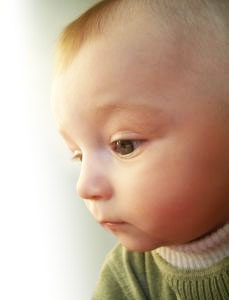 Continued from part 1.
Continued from part 1.
So, if you think that your child is ready, here are some helpful hints and tips to potty training. The progress of toilet training will vary from child to child. Some children will learn very fast, while others will take much longer. It also requires a time commitment by the parents. Here are some tips to consider:
- Start toilet training during a time when things in your lives are stable and predictable. This will help achieve best results. It makes no sense to try when things are hectic and stressful - for example, arrival of a new baby, moving, illness in the family, starting a new job, placing child with a new day-care - basically, when things are stressful for your family.
- Take a few minutes to read books about using the toilet. This helps the child gain an understanding of the concept.
- Help reinforce this concept by putting your child's dolls or stuffed animals on the potty and then teach them how to use it.
- When you start, put on training pants / underwear for your child. These can be easily put on or taken off.
- You can use either pull-up diapers or an extra absorbent type of cloth training underwear. We actually used both. The cloth type absorbs quite well, but you can expect accidents to happen quite often at the beginning, so you'll quickly run out of the cloth pull-ups. That's when we turn to pull-up diapers until all the cloth ones are washed and cleaned.
- If you're comfortable about it, letting your child watch you sit on the toil and explain what it is that you are doing. Observing a parent or a sibling use the toilet is a very effective method. This is part of the reason why it's typically easier to potty train a younger sibling.
- Avoid using treats such as sweet candies as reward for using the potty. Your toddler will view treats as a reward attached to using the toilet, and may simply try to "squeeze" out a few drops just to get some treats.
- Good timing is important - keep an eye on the clock during the day and note the times your child went to urinate or have a bowel movement. Knowing the last time your child had a pee or poo will help you time their next trip to the potty.
- When you go to the bathroom, tell your child that you are going to use the toilet and ask your child if he or she needs to use it too.
- Offer plenty of praise and encouragement, and do not scold your child if he or she has an accident. Do not shame or punish your child for being uncooperative or for having accidents. There are different ideas and opinions about offering rewards such as treats or stickers. We did not resort to any of these, but instead relied on praises and encouragements for our children.
- Sometimes, when you put your child on the toilet, nothing will happen. Read a book or talk to your toddler while waiting. Waiting 2 to 4 minutes is plenty of time, and if nothing happens, then just try again a bit later.
Best Potty for Toilet Training - Toilet Seat Vs. Potty
One question many parents will ponder is whether they should use a small toilet or a seat topper. Indeed, we had the same discussion ourselves, but in the end we used toilet seat toppers to potty train our children. Here's a quick rundown of the pros and cons for our decision making:
 Other than the many colorful varieties, we really couldn't come up with many advantages of using a potty. Instead there are quite a few disadvantages.
Other than the many colorful varieties, we really couldn't come up with many advantages of using a potty. Instead there are quite a few disadvantages.
- It is a P.I.T.A. to have to dispose, clean, and sanitize the potty. You're just finding more work for yourself than necessary.
- The potty isn't really a toilet, and it adds an additional step into the toilet training process.
- It typical costs a bit more - usually in the $20 to $40 dollar range.
- Some children may not wish to transition from the potty to a toilet.
- Again, do you really want to clean it multiple times a day?
 While a toilet seat topper isn't as fancy as a potty, they are CONVENIENT. There are many advantages:
While a toilet seat topper isn't as fancy as a potty, they are CONVENIENT. There are many advantages:
- They are easy to clean, and there's generally little to no mess to clean.
- You can directly flush the excrements!
- Seat toppers are also easy to carry around with you.
- The transition is very easy, since your child is already doing their business directly in the toilet.
- Toilet seats are usually cheaper to buy - usually around the $10 to $15 dollar range.
- A small stool is advisable to help your child step up to the toilet.
We had all of our children potty trained by 2.5 years old using a toilet seat topper with a small stool.


 Watch a 2 year old toddler read, and see how this child's reading skill develops at 3 and 4 years old.
Watch a 2 year old toddler read, and see how this child's reading skill develops at 3 and 4 years old.